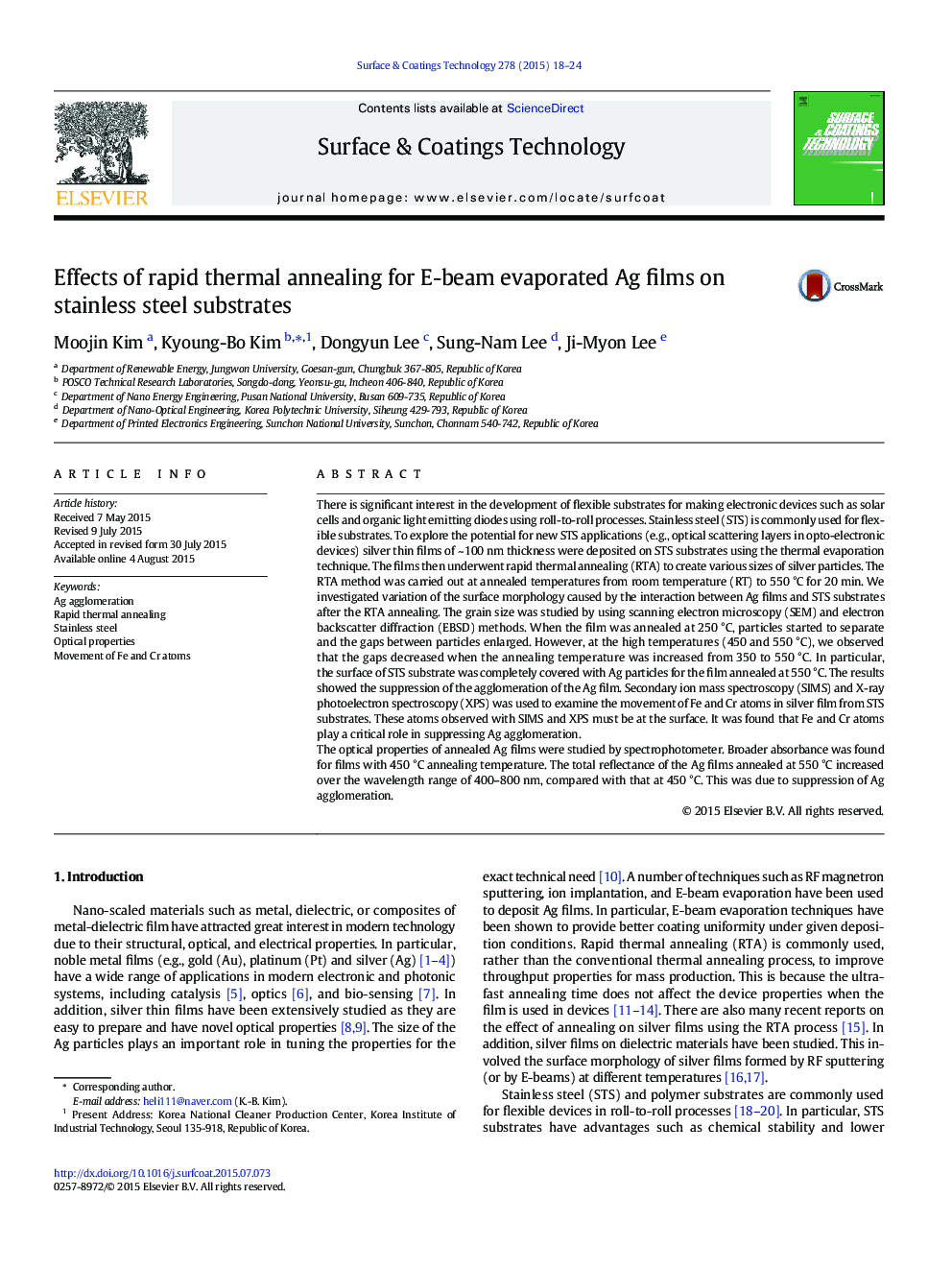| Article ID | Journal | Published Year | Pages | File Type |
|---|---|---|---|---|
| 1656922 | Surface and Coatings Technology | 2015 | 7 Pages |
•Silver films were deposited on stainless steel substrates by evaporation technique.•The films were annealed by RTA processing under various temperatures.•From the dependence of gap size by temperatures, we distinguished the two regions.•The gaps between Ag particles were decreased in the high temperatures.•These phenomena were due to an out-diffusion of Fe and Cr atoms from STS substrates.
There is significant interest in the development of flexible substrates for making electronic devices such as solar cells and organic light emitting diodes using roll-to-roll processes. Stainless steel (STS) is commonly used for flexible substrates. To explore the potential for new STS applications (e.g., optical scattering layers in opto-electronic devices) silver thin films of ~ 100 nm thickness were deposited on STS substrates using the thermal evaporation technique. The films then underwent rapid thermal annealing (RTA) to create various sizes of silver particles. The RTA method was carried out at annealed temperatures from room temperature (RT) to 550 °C for 20 min. We investigated variation of the surface morphology caused by the interaction between Ag films and STS substrates after the RTA annealing. The grain size was studied by using scanning electron microscopy (SEM) and electron backscatter diffraction (EBSD) methods. When the film was annealed at 250 °C, particles started to separate and the gaps between particles enlarged. However, at the high temperatures (450 and 550 °C), we observed that the gaps decreased when the annealing temperature was increased from 350 to 550 °C. In particular, the surface of STS substrate was completely covered with Ag particles for the film annealed at 550 °C. The results showed the suppression of the agglomeration of the Ag film. Secondary ion mass spectroscopy (SIMS) and X-ray photoelectron spectroscopy (XPS) was used to examine the movement of Fe and Cr atoms in silver film from STS substrates. These atoms observed with SIMS and XPS must be at the surface. It was found that Fe and Cr atoms play a critical role in suppressing Ag agglomeration.The optical properties of annealed Ag films were studied by spectrophotometer. Broader absorbance was found for films with 450 °C annealing temperature. The total reflectance of the Ag films annealed at 550 °C increased over the wavelength range of 400–800 nm, compared with that at 450 °C. This was due to suppression of Ag agglomeration.
